Table of content
- Introduction
- Creating a cross-border catalogue of Public Services with Finland and Estonia
- Creating a federal catalogue of Public Services in Belgium
- Tailoring the public service description editor to the Dutch national data model (Samenwerkende Catalogi)
- Adapting the CPSV-AP Validator for CPSV-AP_IT in Italy
- Main results of the pilots
Introduction
This page provides information on the pilots that were undertaken in the context of Action 2016.29 of the ISA² Programme, to test and improve the tools. These tools are open-source solutions that facilitate creating, validating, harvesting and exchanging public service descriptions that comply with the CPSV-AP and can also be easily adapted to reuse for different purposes.
These tools form the basis for pilots in several Member States designed to show the benefits of using interoperable solutions in managing public service descriptions as well as the value of technology in facilitating their harmonisation. Setting up and executing pilots is imperative for demonstrating the benefits and value of these solutions in real-world contexts. In addition, by implementing them in a variety of countries and environments, we are able to demonstrate the reusability, adaptability and scalability of our solutions.
The pilots have demonstrated the value of the tools, offering clear, tangible results of the Catalogue of Services Action, showing how they help deliver greater interoperability and more efficient exchange of information between Member States. In addition, by providing technical support, this Action helps support Member States in improving their underlying systems.
To date, we have designed and implemented the following pilots:
- Creating a cross-border catalogue of Public Services with Finland and Estonia
- Creating a federal catalogue of Public Services in Belgium
- Tailoring the Public Service Description Editor and Creator to the Dutch national data model (Samenwerkende Catalogi)
- Adapting the CPSV-AP Validator for CPSV-AP_IT in Italy
Creating a cross-border catalogue of Public Services with Finland and Estonia


Introduction
Citizens and businesses from Estonia and Finland face a number of challenges both at national and European level when trying to find information on the public services available to them:
- There are different portals for finding public service descriptions and the information is offered in different languages;
- The descriptions do not follow a common structure, and,
- No portal provides a comprehensive overview of all the public services available across Europe.
In addition, public administrations need to develop solutions that allow them to publish user-centric public service descriptions for citizens and businesses on a national and European level.
Finland and Estonia have a great deal of cross-border movement of citizens and business for economic, social and cultural reasons. Therefore, these countries need to exchange large amounts of information across borders, public services being a perfect example.
The pilot can be accessed here.
Functional description
We designed a pilot to implement a user-centric portal where public service descriptions from both countries are available in a harmonised and user-friendly format. To achieve this, we conducted a mapping between the CPSV-AP and the Estonian and Finnish data models (FSC). The information required for the central portal is stored in different national portals in each country. That information was harvested, transformed to the CPSV-AP and published in a user-centric fashion by using the CPSV-AP as a common vocabulary between the data models. The figure below provides an overview of the process.
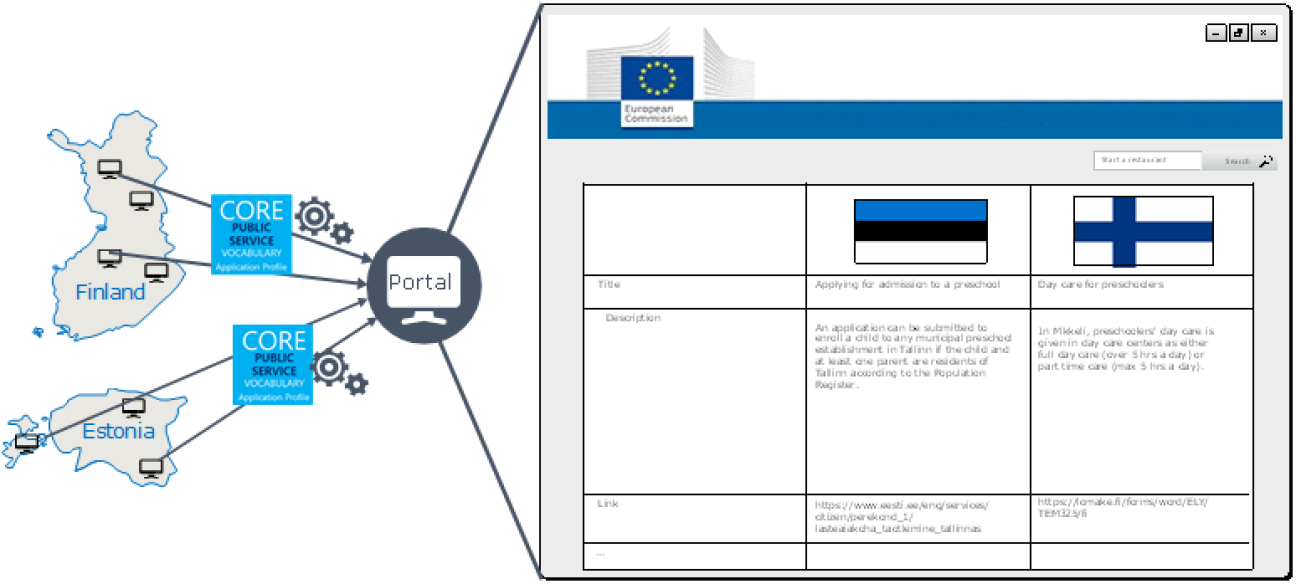
The pilot gathers information spread over a variety of sources on a national level and collects it in a centralised, user-centric visualisation of public service descriptions on a European level. These are then ordered and categorised according to several parameters including life event, business event, sector, etc., making them easily searchable for citizens and businesses.
A screenshot of the portal can be seen below.
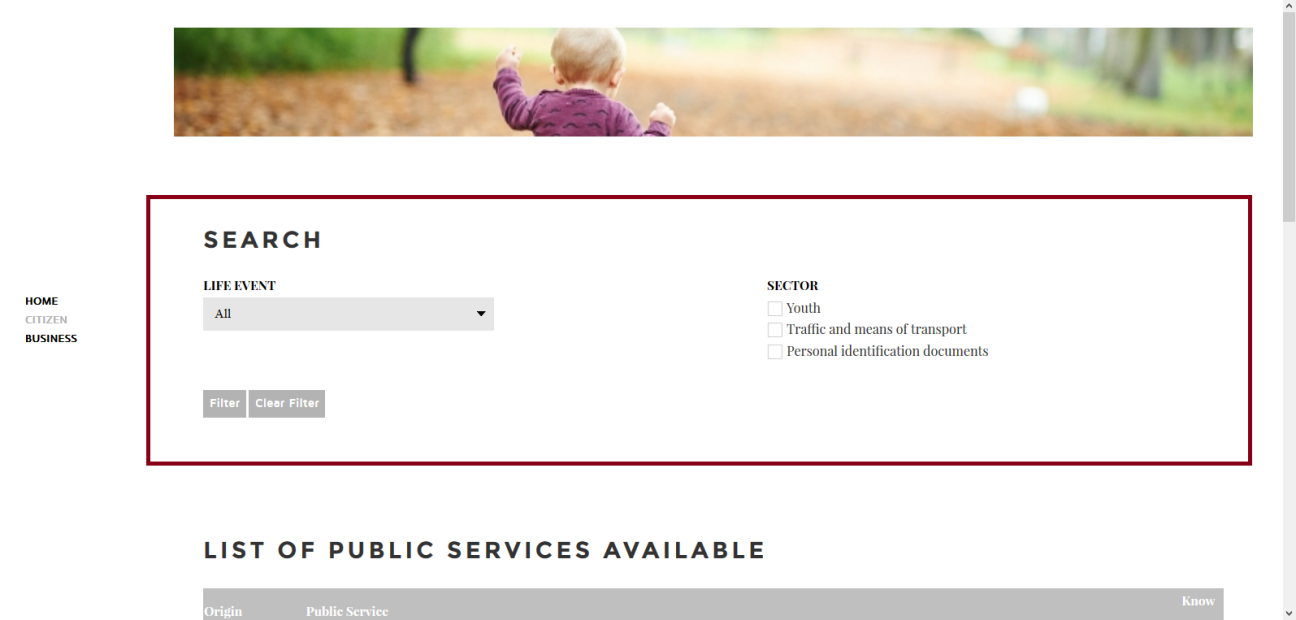
Results
The outcome of the pilot was a website where the harvested data was visualised in a user-centric way. This provides a proof-of-concept both for cross-border portals and for harmonising information based on the CPSV-AP as common vocabulary. A screenshot, with examples of public services harvested from both countries, can be seen below.

Technical description
Both the CPSV-AP Mapping Editor and the CPSV-AP Data Harvester were used to deliver this pilot. The Editor mapped the data models of Estonia and Finland to the CPSV-AP, which was used as a common vocabulary. The public service descriptions from both Estonia and Finland were transformed using the mappings, creating CPSV-AP compliant descriptions. These descriptions were then collected by the CPSV-AP Data Harvester and visualised in the user-centric portal.
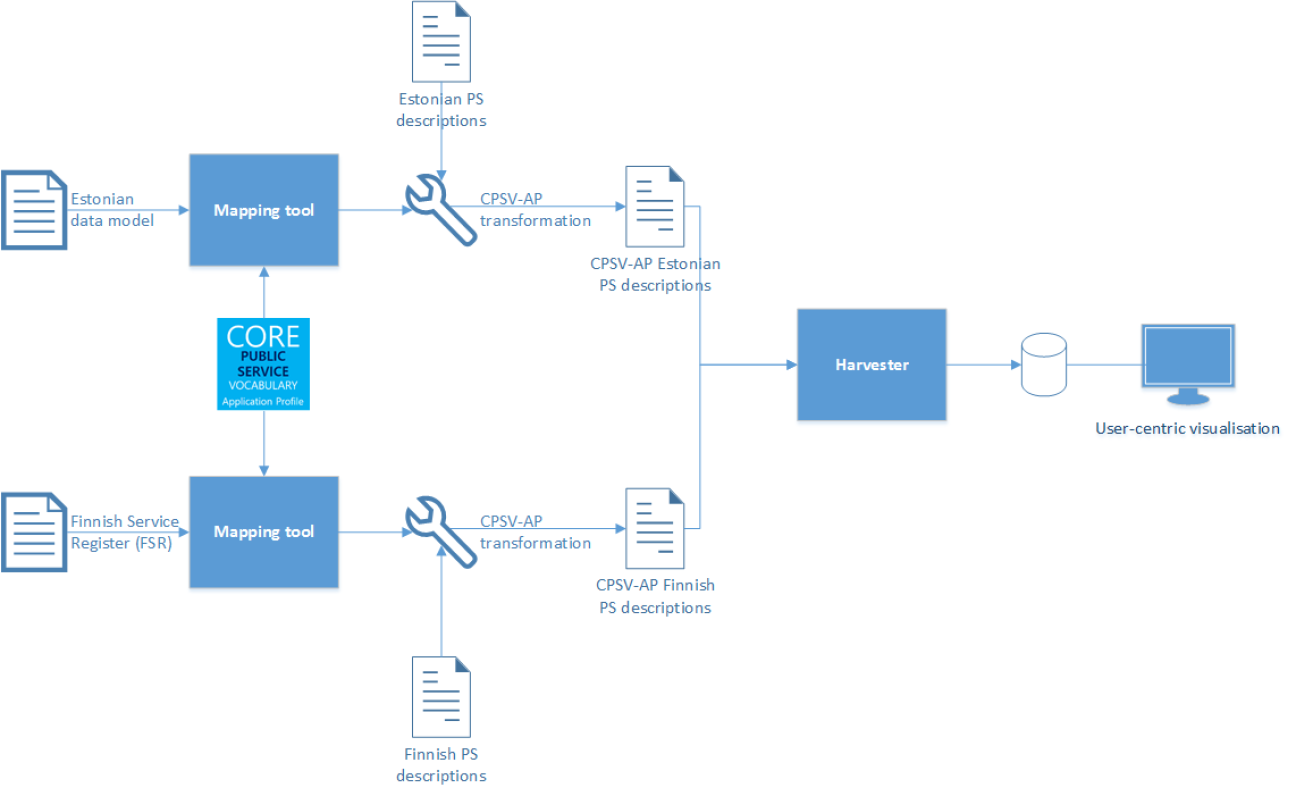
Creating a federal catalogue of Public Services in Belgium

Introduction
In highly federated countries such as Belgium, citizens and businesses regularly face challenges in accessing information on public services available in their country, as the information is spread over different local, regional and national portals. In addition, other issues arise when trying to access the information:
- There are different portals for locating public service descriptions and the information is offered in different languages;
- The descriptions do not follow a common structure, and
- No portal provides a comprehensive overview of all the public services available across Belgium.
In Belgium, the different regions are responsible for providing the public services in their jurisdiction. Therefore, to provide an effective overview of all public services available in Belgium, the regions need to exchange a large quantity of information on their public services.
The pilot can be accessed here
Functional description
To accomplish the creation of an interfederal catalogue of services, we designed a pilot to implement a user-centric portal where to offer public service descriptions from the different regions and authorities, based on the harvesting of information from multiple sources into a common system. To achieve this there was a mapping between the Flemish data model, i.e. the IPDC (interbestuurlijke producten- en dienstencatalogus), a mapping between the Walloon data model, i.e. NOSTRA, and the CPSV-AP and a mapping between the data model of Fedict and the CPSV-AP. These mappings have been used for creating CPSV-AP compliant descriptions of public services.
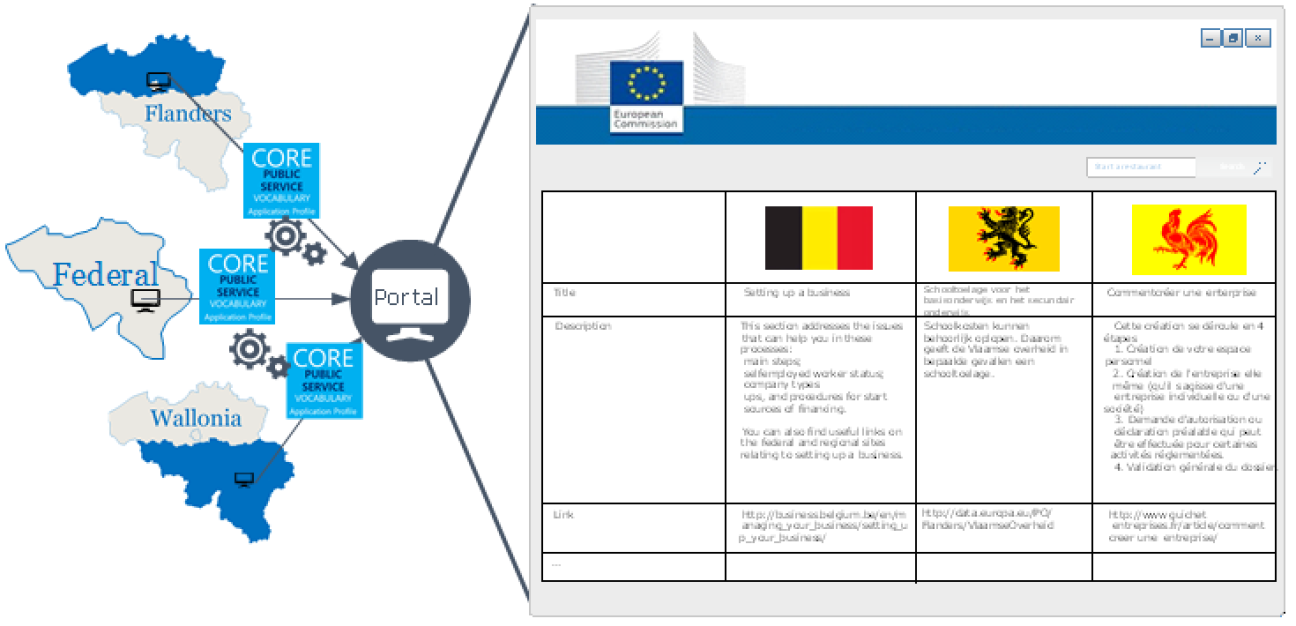
Using the CPSV-AP as a common language between the different data models made the exchange and integration of data between public administrations more efficient, as public services only needed to be described once. By collecting data from both Flanders and Wallonia as well as on the federal level, the pilot is an overarching project for Belgium that provides a proof of concept for the interchangeability of descriptions with a user-centric visualisation. These descriptions are categorised and ordered on life event, business event, sector, etc., to make them easily searchable. An example of the implemented solution can be seen below.
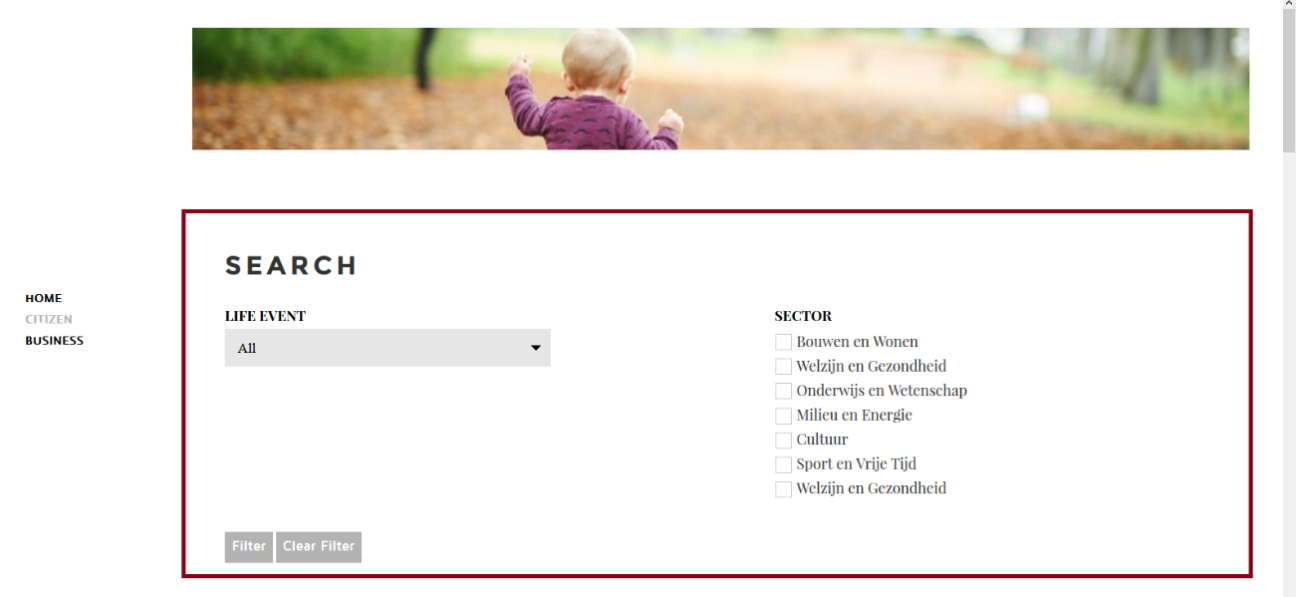
Results
The final outcome of the pilot was a website where the harvested data was visualised in a user-centric way.This provides a proof-of-concept for harmonising information based on the CPSV-AP as common vocabulary. A snapshot can be seen below.
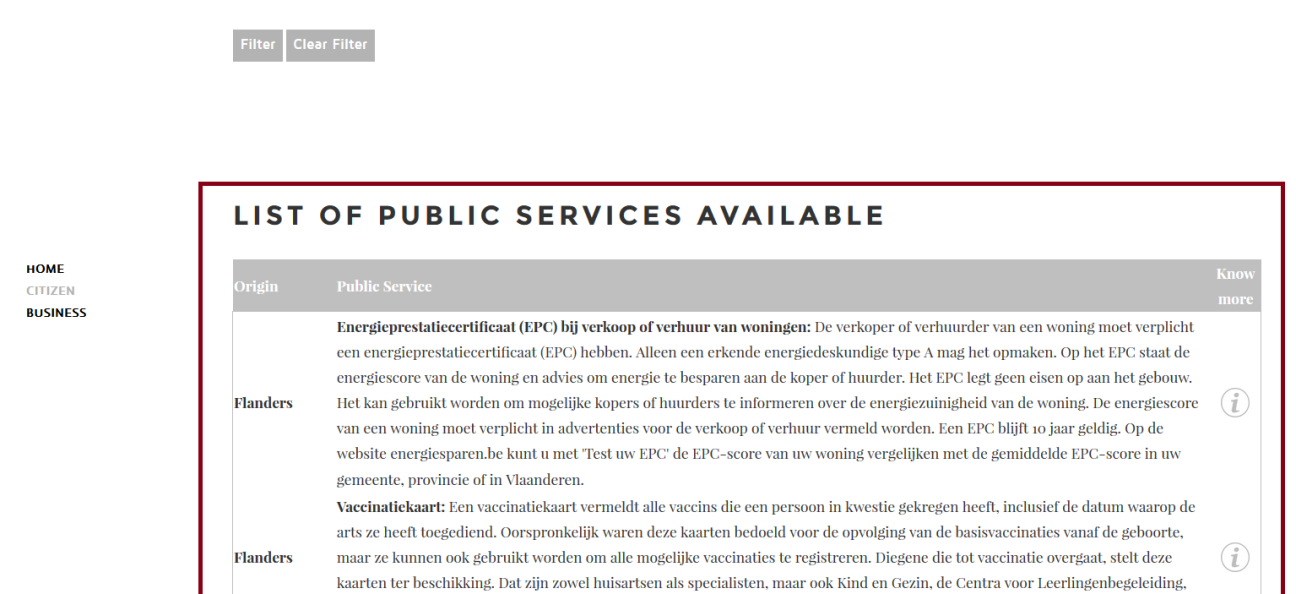
Technical description
In this pilot, the CPSV-AP Mapping Editor and the CPSV-AP Data Harvester were used. The Mapping Editor mapped the data models of Flanders, Wallonia and the federal level to the CPSV-AP, which was used as a common vocabulary. The public service descriptions from the three sources were transformed using the mappings, creating CPSV-AP compliant descriptions. These descriptions were then harvested and visualised in the user-centric portal. This can be seen in the figure below.
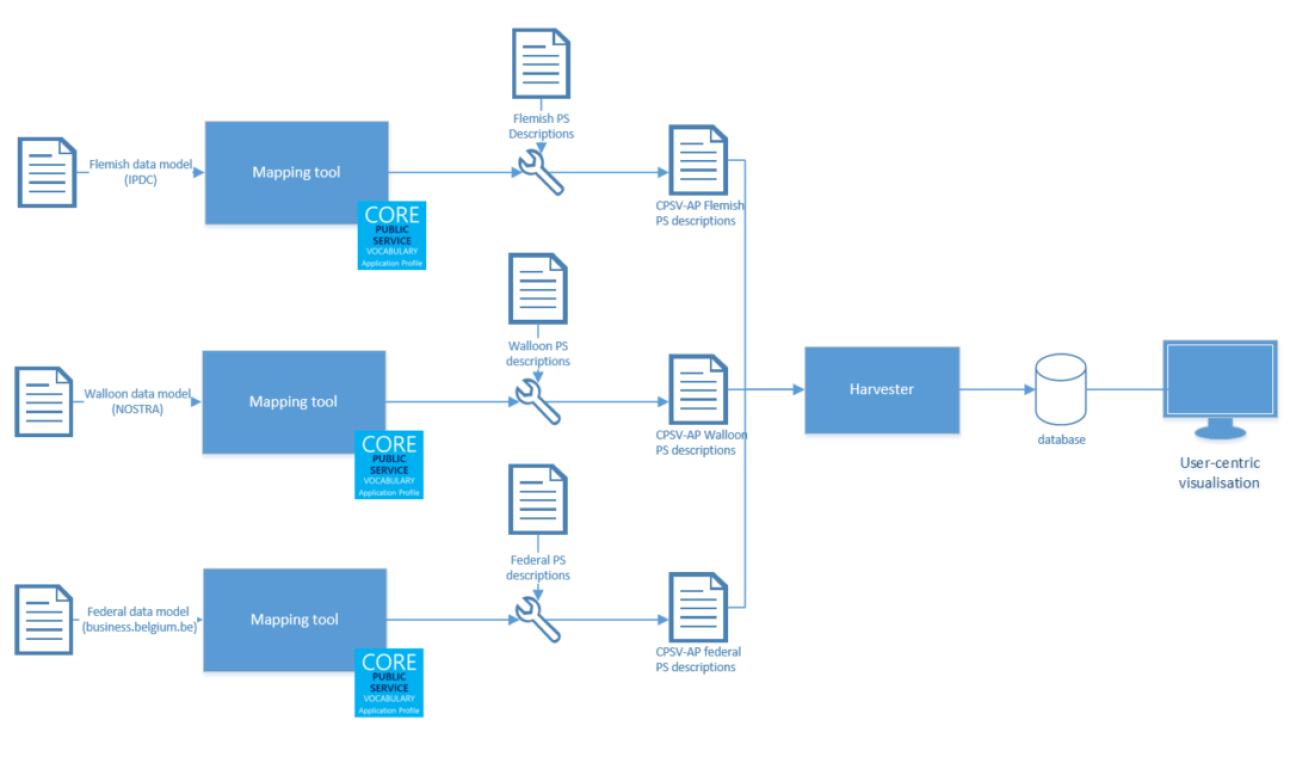
Tailoring the public service description editor to the Dutch national data model (Samenwerkende Catalogi)
Introduction
The Netherlands wanted to have a simple way of creating public service descriptions that follow the Samenwerkende Catalogi, the Dutch national data model for describing and exchanging public services. The goal was to develop an application that was user-friendly and could be used by the different municipalities and government organisations in the Netherlands for creating public service descriptions. These descriptions would be collected by the ICTU and stored in one place.
Functional description
By adapting the CPSV-AP Public Service Description Editor to the Samenwerkende Catalogi format we provided the solution that the Netherlands were looking for. The new Public Service description editor enables user to create descriptions following the Dutch data model, save these and edit them later in an user-friendly way. Further improvements in the user experience for Dutch users was provided by the translation of the labels and instructions to Dutch
The adapted editor will provide all the functionality of the original CPSV-AP Public Service Description Editor like creating, editing and exporting descriptions. The export will be able in the CPSV-AP format as well as the Samenwerkende Catalogi XML format.

Results
The result of the pilot was a user-friendly webform that can be used by the Dutch public administrations to create and edit public service descriptions. Furthermore the descriptions can be easily stored and extracted in the Samenwerkende Catalogi format.
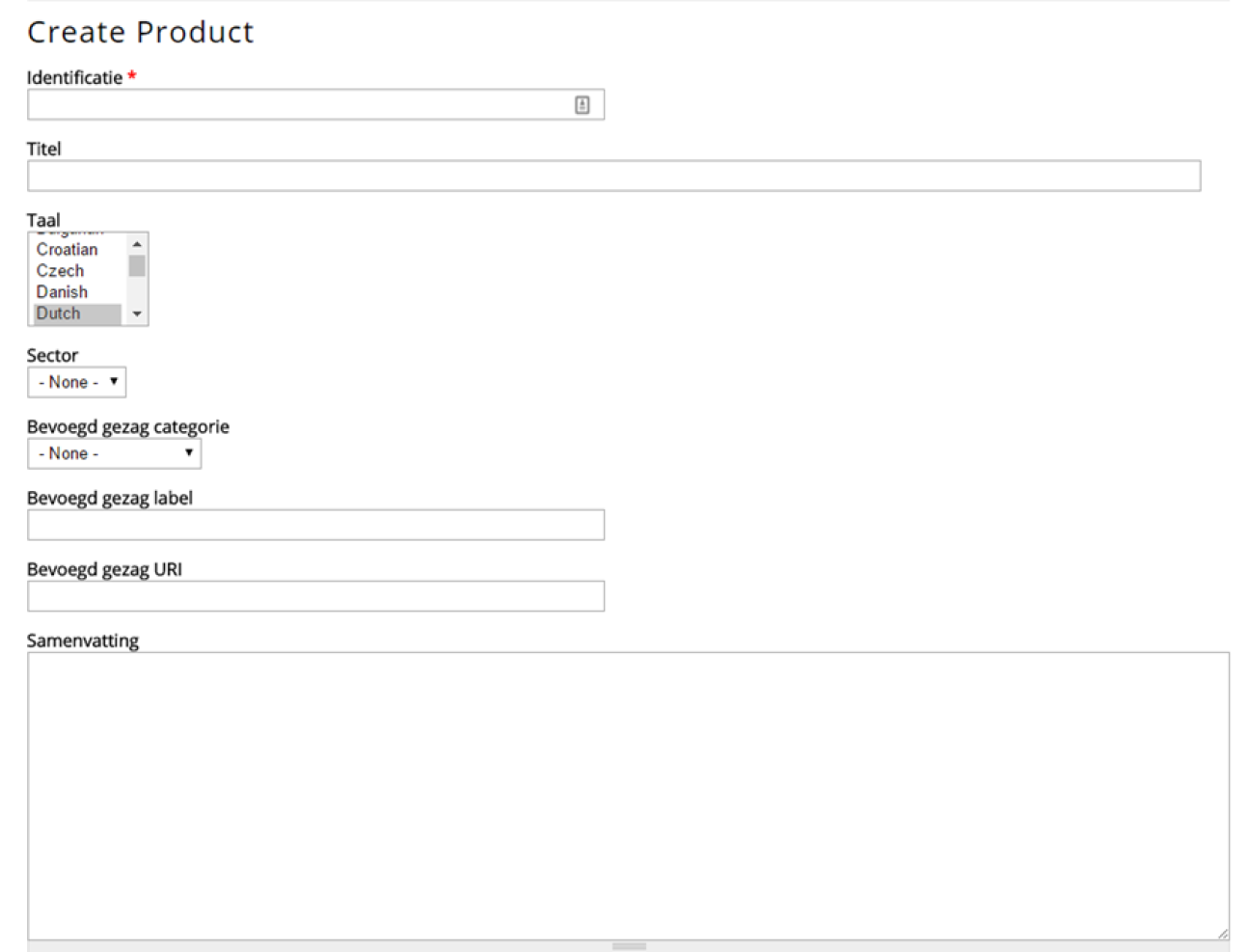
Technical description
The technical architecture of the Samenwerkende Catalogi Public Service Description Editor is identical to the CPSV-AP Public Service Description Editor. The changes made were primarily to the labels and fields (removing, editing and adding fields to accommodate the Samenwerkende Catalogi data model) and changes to the mapping of the RDF/XML tags. In addition, a new module for exporting the descriptions in the Samenwerkende Catalogi XML was developed and implemented. A high-level view on the technical architecture of the editor can be seen below.

Adapting the CPSV-AP Validator for CPSV-AP_IT in Italy

Introduction
Italy is working to create a national catalogue of public services. To achieve this, they are collecting the descriptions from different sources throughout the country. Frequently, the public service descriptions that they receive do not comply with the national data model, i.e. the CPSV-AP_IT. Checking these manually would be virtually impossible, hence an automated approach was needed.
In this pilot, we tailored the CPSV-AP Validator to be able to validate the public service descriptions. This involved modifying the rules of the Validator according to the Italian specifications, namely CPSV-AP_IT. With the correct rules in place, Italy can test the legitimacy of the acquired public service descriptions and offer the provider the necessary feedback.
In addition, the Italian region of Trentino was interested in using the Validator to check that its data complied with both the CPSV-AP_IT and the data models used at national and European levels. Trentino wants to improve standardisation and structuring of their public service descriptions and is looking at European solutions to this challenge. By reusing the tools and applications created through the Catalogue of Services Action, they can realise both cost-savings and compatibility benefits.
Functional Description
The Data Validator verifies that descriptions of public services comply with the requirements defined in the CPSV-AP_IT. A user can upload a dataset containing public service descriptions and run a compliance check with the CPSV-AP_IT, detecting potential errors and inconsistencies such as conflicts in data formats, missing mandatory classes and properties or incorrect relations between classes. This provides public administrations with feedback on identifying and resolving potential inconsistencies, thus improving the quality of their public service descriptions, enhancing harmonisation.
Results
The Validator rules were successfully changed and implemented in the CPSV-AP Data Validator. Italy can now use the adapted Validator to validate CPSV-AP_IT descriptions. It successfully checks descriptions collected from different sources throughout Italy and displays inconsistencies or mistakes as shown.
Technical Description
The Validator uses a checklist of rules to verify the compliance of the public service descriptions. By adapting the checklist with the rules defined by the CPSV-AP_IT, it can validate these descriptions. The technical architecture of the adapted Validator is the same as the CPSV-AP Validator, but uses different sets of rules.
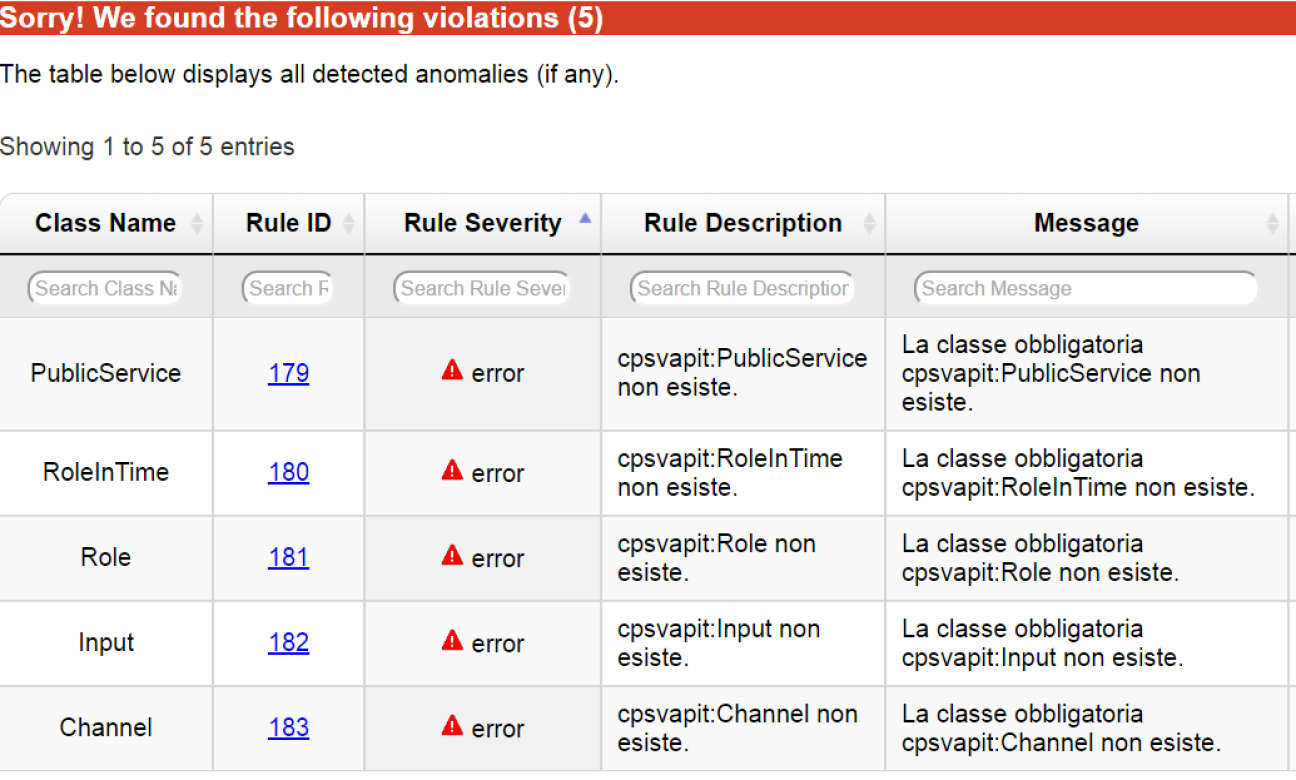
Main results of the pilots
The outcomes of the pilots have been successful and are recognised as such by the stakeholders. Each pilot has proved that the participating Member States are interested in working together to harmonise their information, facilitating the provision of public service descriptions to citizens and businesses.
The cross-border and federal pilots demonstrate that working with the CPSV-AP as a common vocabulary addresses challenges such as information spread, non-harmonised information and a number of other problems.
Removing or reducing the impact of these challenges increases the access and reach of citizens and businesses to information on public services as well as improving the efficiency of how that information is created and exchanged.
The pilots have successfully demonstrated the utility, reusability and adaptability of the tools. In addition, the pilots have led to several improvements in the tools. Some of them were applied immediately, while others were been logged for next steps and opportunities for the future.
|
More information on these pilots can be found here. The document describes the stakeholders, approach, proposed solution and implementation of the pilots in greater detail. |

